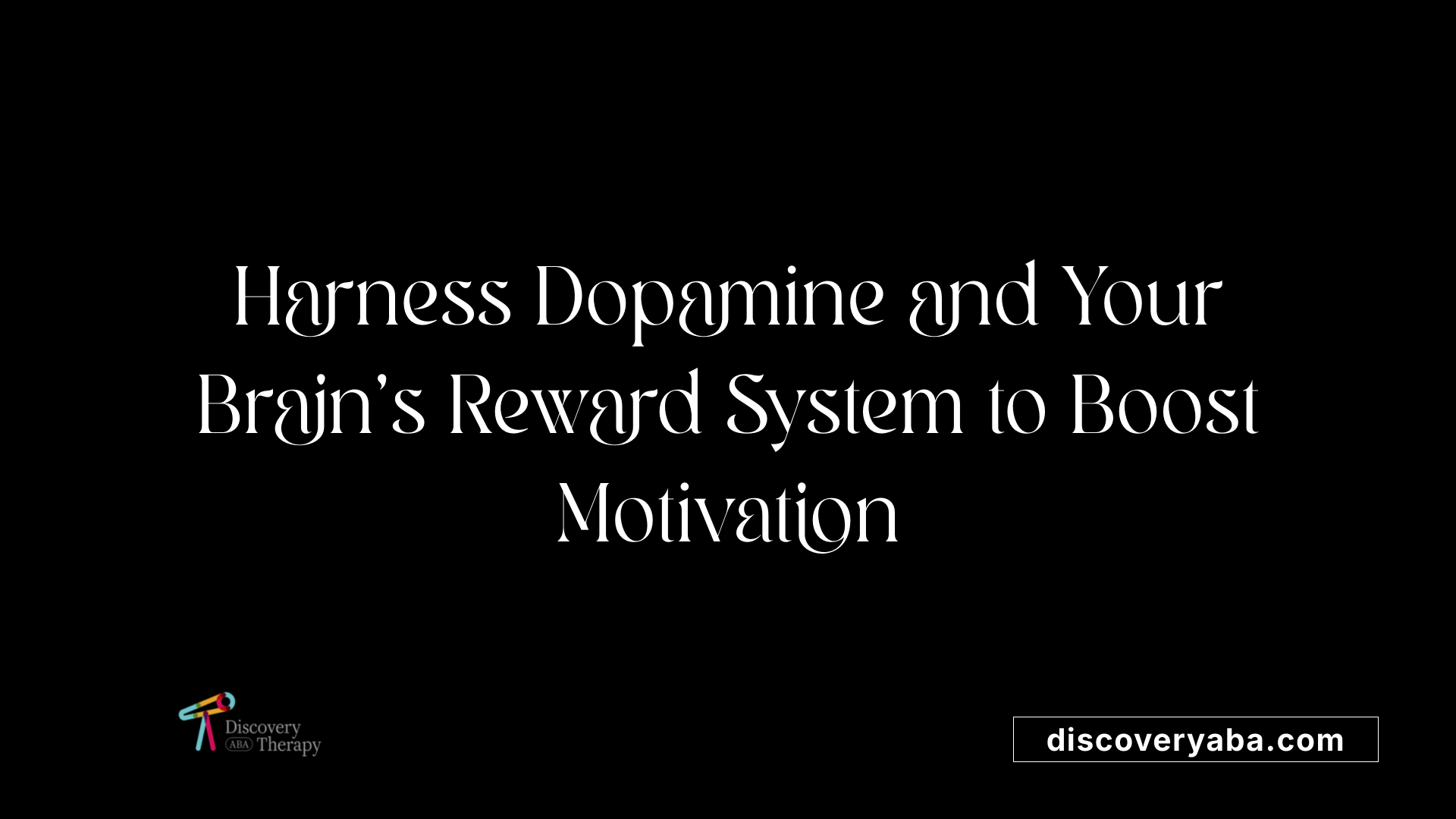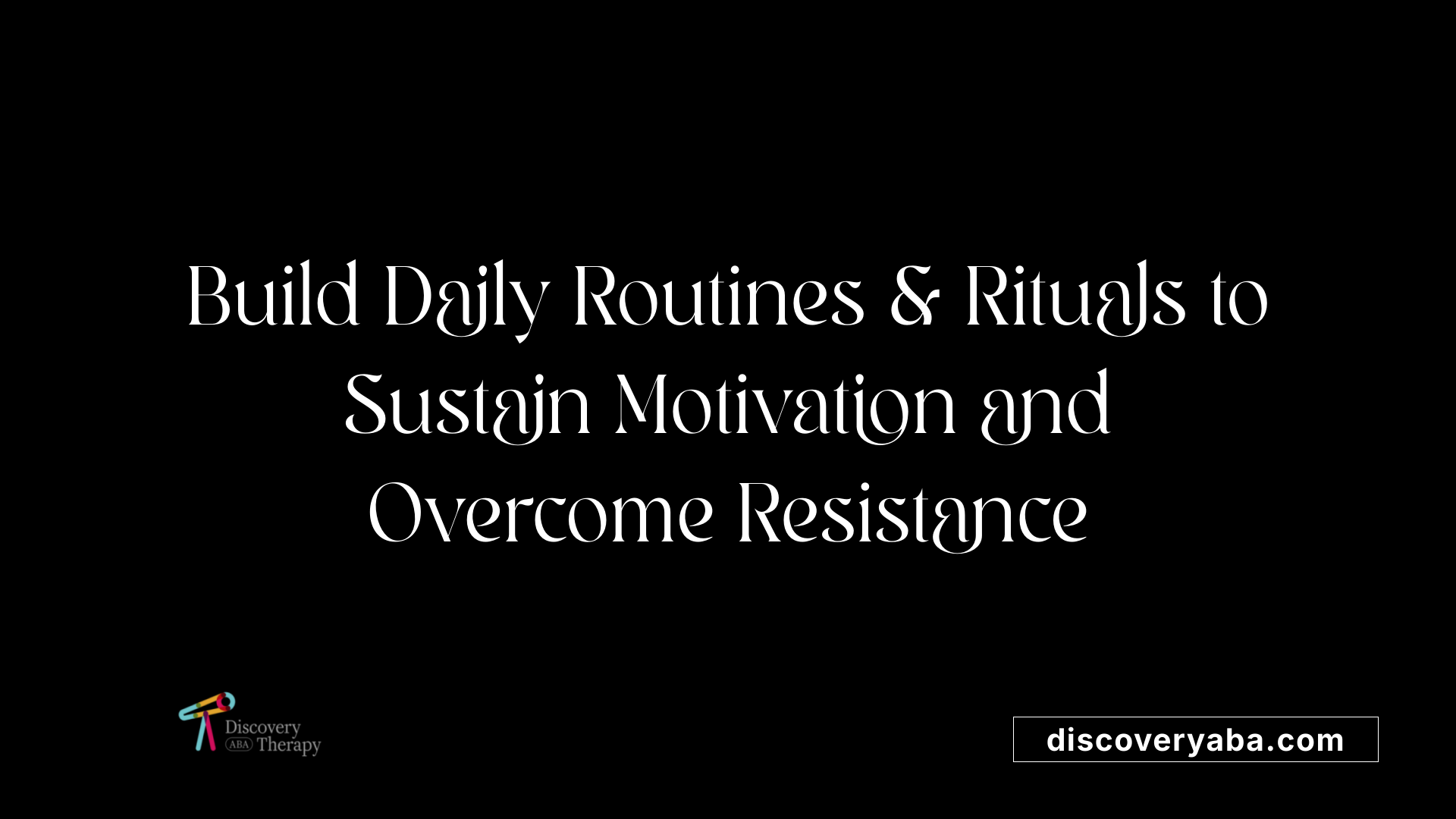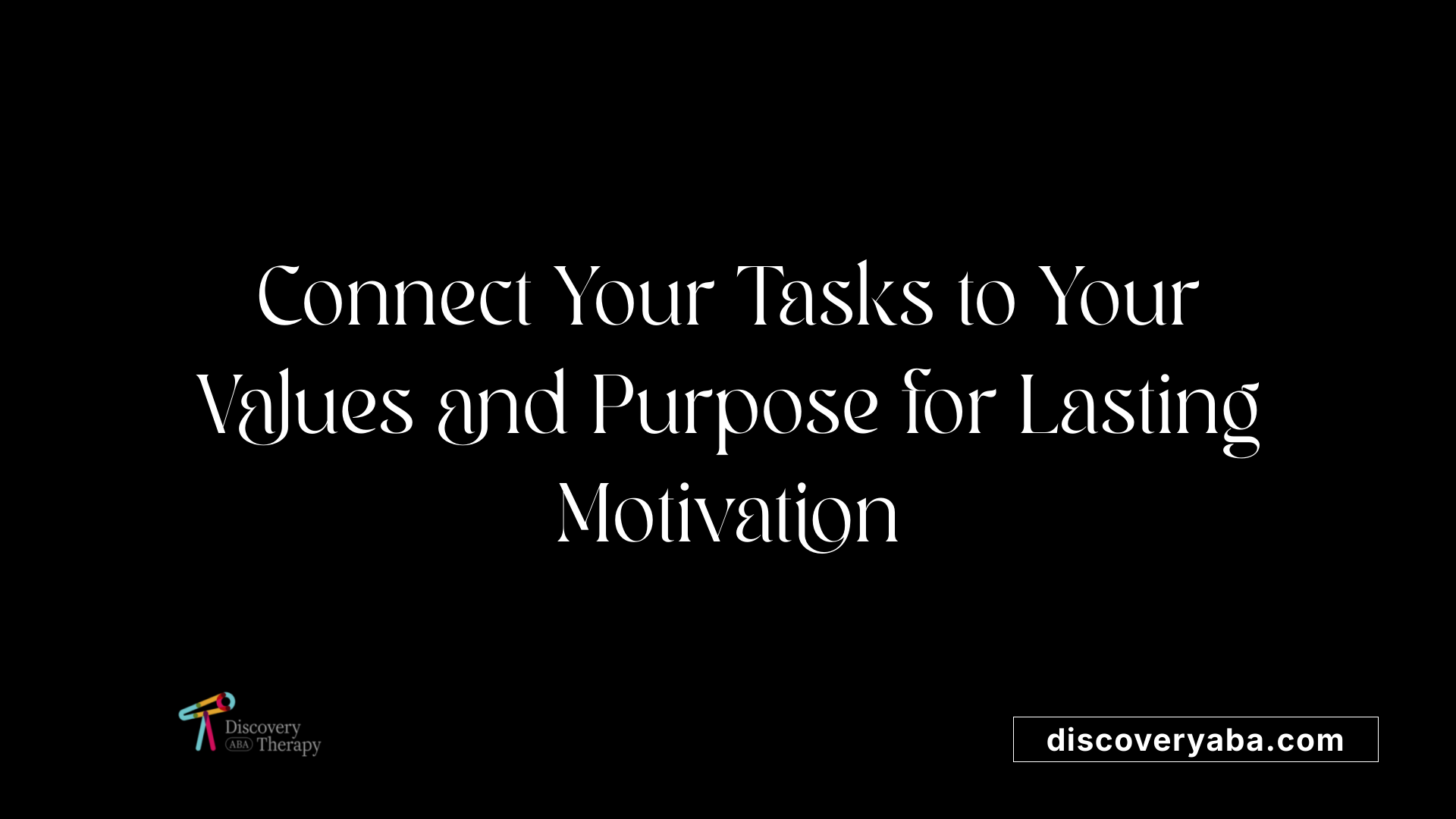How to build motivation for difficult tasks
Unlocking Inner Drive: Strategies to Tackle Challenging Tasks

Understanding Motivation and Its Role in Overcoming Difficulties
Motivation is a complex psychological force that propels us to initiate and persist in actions, especially when faced with challenging tasks. Building sustainable motivation requires understanding its scientific basis, including neurological factors like dopamine, and applying practical strategies tailored to individual needs. This comprehensive guide explores how to harness motivation, set effective goals, and develop habits that support perseverance through difficulty.
The Science of Motivation: Intrinsic vs. Extrinsic Rewards

What is the difference between intrinsic and extrinsic motivation?
Motivation can be driven by internal desires or external rewards. Intrinsic motivation comes from finding an activity itself fulfilling or enjoyable, making the activity its own reward. For example, a person may read a book because they love learning, not just to impress others. In contrast, extrinsic motivation relies on outside incentives like rewards, recognition, or avoiding punishment.
Research suggests that activities which trigger intrinsic motivation tend to lead to better achievement. When a task aligns with personal interests or passions, individuals are more likely to engage deeply and persist longer.
How activity as its own reward influences achievement
Engaging in work that is enjoyable or framed positively can sustain motivation over time. When tasks are perceived as meaningful or pleasurable, individuals experience a flow state, characterized by intense focus and satisfaction. Breaking large goals into smaller, manageable subgoals helps maintain momentum by providing frequent feelings of success.
Visual cues like progress trackers or celebrating small wins activate dopamine, reinforcing the activity. This neurotransmitter is directly linked to feelings of reward and motivation. Consequently, activities that naturally produce enjoyment or regular positive feedback strengthen perseverance.
Neurological role of dopamine in motivation
Dopamine plays a crucial role in motivation by reinforcing behaviors associated with reward. When we take action—especially towards our goals—dopamine is released, creating feelings of satisfaction that encourage us to repeat the effort.
The dopamine cycle involves performing a task, experiencing a reward, and thus increasing our motivation for ongoing effort. Waiting for motivation to appear before starting tasks is often ineffective since dopamine is primarily released after initiating action.
Creating routines or rituals, such as starting work at a specific time or engaging in a pre-task activity, can help trigger dopamine release, making it easier to begin. Incorporating rewards—like taking breaks or celebrating milestones—also boosts dopamine levels, reinforcing the motivation loop.
How do I motivate myself to do hard things?
Motivating oneself for challenging tasks involves several strategies. Setting clear, specific goals and breaking them into smaller, manageable steps prevent overwhelm. Developing routines and creating an environment that minimizes distractions—such as turning off the TV or silencing notifications—can make starting easier.
Using rewards for small achievements and visualizing the positive outcomes of completing difficult tasks can stimulate dopamine release, further motivating action. Recognizing the personal significance of the task and connecting it to larger life goals or passions increases internal drive.
How do you get motivated to do a difficult task?
Starting with well-defined, achievable objectives helps initiate motivation. Adjusting your environment to reduce temptations or interruptions—and scheduling high-focus periods early in the day—enhances concentration.
In addition, visualizing success and focusing on the long-term benefits provide a mental boost. Incorporating small rewards and reflecting on past successes can trigger dopamine, reinforcing your persistence. Remember, action often precedes motivation, so taking the first step is crucial.
By understanding the underlying neuroscience, such as how dopamine supports motivation, you can adopt practical strategies to sustain effort through routines, goal-setting, and recognizing progress. Connecting tasks to meaningful reasons and celebrating small wins maintains momentum even during setbacks.
Goals and Planning: Key to Sustained Motivation

How do I stay motivated when I have no energy?
Feeling drained can make it hard to find motivation, but focusing on self-care can help. Prioritize getting enough sleep, staying hydrated, and eating nutritious foods. Once your basic needs are met, start with small, easy tasks that require minimal effort. These manageable steps can create a sense of accomplishment and gradually boost your energy levels.
Breaking larger tasks into smaller, more achievable parts also reduces overwhelm and increases the likelihood of taking action. Using calendars or task lists to set clear deadlines helps create a structure, making it easier to track progress and stay motivated.
How can I stay motivated when I am depressed?
Dealing with depression can sap motivation, but small daily routines can provide stability. Set simple, attainable goals that you can achieve, even if they are just basic activities like walking outside or organizing your space.
Engaging in outdoor activities and spending time in nature can uplift your mood and renew your motivation. Sharing your goals with trusted friends or seeking support from mental health professionals can also reinforce your efforts. Remember, recognizing incremental progress is vital—it keeps you moving forward despite emotional challenges.
Effective Goal-setting and Tracking for Motivation
Setting specific, well-defined goals is essential to maintain focus and motivation. Using the SMART framework ensures your goals are Specific, Measurable, Achievable, Realistic, and Time-bound, which clarifies what needs to be done and by when.
Breaking larger ambitions into smaller milestones gives you concrete targets to work toward regularly. For example, instead of aiming to "get fit," set a goal to walk 15 minutes daily or complete a specific workout routine.
Utilizing calendars and digital tools helps track deadlines and visualize progress. Seeing your advancements—like checkmarks or completed tasks—reinforces positive feelings and encourages persistence.
| Strategy | Description | Benefit |
|---|---|---|
| SMART Goals | Specific, measurable, achievable, realistic, time-bound | Clarifies objectives and reduces ambiguity |
| Break Goals into Milestones | Divide big goals into smaller steps | Maintains momentum and provides frequent successes |
| Use Calendars & Deadlines | Schedule and mark progress | Keeps you accountable and aware of progress |
Focusing on your long-term purpose, visualizing success, and rewarding small wins further sustain motivation. Combining these strategies ensures continuous effort and helps you navigate challenging emotional states or low-energy periods.
The Power of Routines, Rituals, and Habits
 Building daily routines and healthy habits is fundamental to sustaining motivation over time. Consistent behaviors, like morning stretches, planning sessions, or dedicated work blocks, help make productive activities a regular part of your day. When these routines are established, they act as automatic cues that trigger motivation and action, reducing the mental effort needed to get started.
Building daily routines and healthy habits is fundamental to sustaining motivation over time. Consistent behaviors, like morning stretches, planning sessions, or dedicated work blocks, help make productive activities a regular part of your day. When these routines are established, they act as automatic cues that trigger motivation and action, reducing the mental effort needed to get started.
Using rituals as triggers for action further enhances this effect. For example, listening to a favorite song or having a cup of coffee before diving into work can serve as signals that it’s time to focus. These small, enjoyable rituals create positive associations with tasks, making it easier to overcome initial resistance.
Understanding how habits form is essential. Science shows that repetition in a stable context leads to increased automaticity—the point where behaviors become routines that require minimal conscious effort. This process involves a mental shift where actions are triggered automatically by environmental cues, reducing reliance on willpower. Incorporating triggers that align with existing routines can accelerate habit formation.
How do I stay motivated every day?
Create routines that incorporate small, positive habits like morning stretches or planning. Consistency and visual progress tracking build momentum and ingrained routines.
How can I build motivation for difficult tasks through habits?
Pairing the start of difficult tasks with pleasurable rituals, such as listening to music or enjoying coffee, can create positive associations and trigger motivation automatically.
Implementing these strategies not only promotes regular effort but also reinforces intrinsic motivation by linking activities to enjoyable and predictable patterns. Over time, these habits and rituals form an automatic system that keeps motivation flowing and makes tackling challenges more manageable.
Fostering a Sense of Purpose and 'Why'

Connecting tasks to personal values
Aligning your tasks with your core values can significantly boost motivation. When you see how your work supports what is important to you—whether it's family, health, learning, or growth—your efforts become more meaningful. For example, studying hard not only improves your grades but also brings you closer to your ambitions, reinforcing the personal significance of your actions.
Using purpose to enhance persistence
Having a clear sense of purpose helps you push through challenges and setbacks. When you remind yourself why you started a task—be it personal growth, career advancement, or contributing to a larger goal—it creates psychological resilience. This perception of purpose converts the task from a mere obligation into a meaningful pursuit, making it easier to stay committed.
Visualization of success and long-term goals
Visualizing future success and emphasizing your long-term objectives can strengthen your motivation. Picture yourself achieving your goals, experiencing the feelings and benefits associated with completion. This mental imagery not only makes your aspirations more tangible but also triggers positive emotions that encourage ongoing effort.
| Aspect | Technique | Benefit |
|---|---|---|
| Connecting to personal values | Reflect on what matters most to you | Increases personal relevance and intrinsic motivation |
| Reinforcing purpose | Regularly revisit your 'why' | Builds resilience during tough times |
| Visualizing success | Create mental images of achievement | Boosts positive emotions and commitment |
What if there's no motivation without depression?
Feeling no motivation without experiencing depression often results from situational fatigue or boredom. In such cases, reconnecting with your core purpose and values can spark renewed interest and energy. Remembering why a task matters or how it aligns with your larger goals can reignite intrinsic motivation.
How do I stay motivated when I want to quit?
When the urge to give up arises, focusing on your overarching purpose and visualizing the long-term benefits can provide a renewed sense of commitment. Reminding yourself of the bigger picture and what achievements await you makes the current difficulties seem more manageable and temporary.
By intentionally linking your daily activities to your personal purpose and long-term ambitions, you create a powerful internal drive. This purpose acts as a guiding star, helping you stay focused and motivated, even during challenging phases of your journey to success.
Neurological Aspects of Motivation: Dopamine and Behavior
What is dopamine’s role in reward and motivation cycles?
Dopamine is a crucial neurotransmitter involved in the brain's reward system. It signals pleasure and reinforces behaviors that are beneficial or desirable. When you complete a task or achieve a goal, dopamine is released, which creates feelings of satisfaction and encourages you to repeat the action. This cycle of reward and reinforcement helps maintain motivation over time.
How does action lead to reward and reinforcement?
The process begins with initiating an action, such as starting a challenging task. As you make progress or accomplish small milestones, your brain releases dopamine. This release enhances your mood and provides a sense of achievement, reinforcing the behavior. Over time, this builds a positive feedback loop where effort leads to reward, motivating continued effort and persistence.
Strategies to trigger dopamine release
You can actively stimulate your dopamine levels to boost motivation. Breaking large goals into small, manageable steps creates frequent opportunities for small wins, each triggering dopamine release. Celebrating these successes, whether by rewarding yourself or simply acknowledging your progress, further enhances this effect.
Engaging in enjoyable activities or physical exercise also prompts dopamine release, increasing energy and focus. Additionally, establishing routines and rituals, such as listening to motivating music before starting work, can become triggers that activate dopamine pathways, making it easier to begin and sustain effort.
How do I stay motivated when I have no energy?
When energy is low, engaging in small, manageable actions can stimulate dopamine production. For example, a brief walk outdoors or a quick enjoyable activity can boost your mood, making it easier to tackle more significant tasks.
How do I motivate myself to do hard things?
Starting with simple, easy actions helps create initial momentum. Completing these small wins encourages dopamine release, which motivates you to take on larger or more difficult tasks. Over time, this strategy builds confidence and resilience, making challenging activities feel more achievable.
Overcoming Procrastination and Fear of Difficult Tasks
How do you motivate yourself to do a difficult task?
Starting a hard task can often feel overwhelming, leading to avoidance. A practical approach is to break the task into small, manageable steps or milestones. This not only makes the task seem less intimidating but also helps create a sense of progress.
Using techniques like the 10-minute rule can be especially effective. Commit to working on the task for just ten minutes. Once you begin, you'll often find that starting is the hardest part, and continuation becomes easier. This small initial effort can trigger momentum and reduce feelings of dread.
Confronting fears directly also plays a vital role. Acknowledge what makes the task seem difficult—be it fear of failure, perfectionism, or discomfort. Recognizing these feelings allows you to address them head-on, lowering anxiety and avoidance behaviors.
How can I stay motivated when facing a challenging task?
Maintaining motivation during tough tasks requires strategic planning and mental framing. Break the challenging project into smaller parts, each with specific, achievable objectives. Setting clear, time-bound goals keeps you focused and provides regular points of success.
Focusing on the reasons why completing the task will benefit you, whether it’s personal growth, professional achievement, or long-term rewards, can reinforce your commitment. Visualizing how good it will feel once finished can also boost your drive.
Additionally, fostering a positive mindset about progress can be powerful. Celebrate small wins along the way to reinforce your effort and build confidence. Remember that discomfort is temporary, and pushing through the initial resistance often results in a sense of accomplishment afterward.
Related strategies for overcoming procrastination include:
| Technique | Description | Benefit |
|---|---|---|
| Setting SMART goals | Making goals specific, measurable, achievable, relevant, and time-bound | Clarity and direction |
| Using accountability partners | Sharing goals with friends or colleagues for support and encouragement | Increased commitment |
| Creating routines | Establishing consistent habits linked to work periods | Reduces reliance on motivation |
| Visualizing success | Imagining positive feelings after completing tasks | Boosts intrinsic motivation |
| Managing distractions | Turning off apps, minimizing noise, and creating dedicated workspace | Enhances focus |
| Rewarding small wins | Giving yourself small treats for progress | Reinforces effort |
| Practicing self-compassion | Being kind to yourself during setbacks | Maintains mental resilience |
Focusing on internal drivers such as purpose, passion, and setting a clear plan is more effective than relying solely on fleeting motivation. Remember, initiating action often triggers the motivation needed to persist.
More information
Search query: overcoming procrastination for difficult tasks
Environmental and Social Strategies to Boost Motivation
Reducing distractions and optimizing workspace
Creating an environment free of interruptions is vital for maintaining motivation. Turning off notifications, silencing phones, and limiting access to distracting apps can help sustain focus. Establishing a dedicated, quiet workspace, such as a home office or library, supports concentration and makes it easier to enter a productive mindset. Pacing work into small chunks with regular breaks also prevents fatigue, keeping motivation high.
Seeking social support, accountability groups, peer influence
Sharing your goals with close friends, family, or study groups increases accountability and encouragement. When others are aware of your objectives, you’re more likely to follow through. Joining groups or communities focused on similar aims provides motivation through shared effort and collective progress.
Social influence's impact on effort and perseverance
Interacting with high-performing peers or mentors can inspire increased effort and resilience. Talking about goals and progress with motivated individuals fosters a sense of obligation and commitment. Studies highlight that positive peer pressure and social reinforcement bolster perseverance, helping you push through difficult phases.
| Strategy | Description | Additional Benefits |
|---|---|---|
| Distraction elimination | Limit notifications and set up a dedicated workspace | Maintains concentration, prevents mental fatigue |
| Sharing goals | Tell friends, family, or mentors about objectives | Enhances accountability and emotional support |
| Peer collaboration | Join groups or study partners | Fosters motivation through shared effort |
| Interaction with high performers | Seek advice and feedback from motivated individuals | Boosts perseverance and provides new perspectives |
When work becomes tough or feelings of wanting to quit arise, creating a distraction-free environment combined with social support can make a significant difference. Sharing goals with others not only keeps you accountable but also taps into emotional and motivational support networks. Engaging with peers who are motivated and successful can inspire you to keep pushing forward, even when challenges seem overwhelming.
Research on social influence indicates that surrounding yourself with proactive, goal-oriented individuals encourages perseverance and effort. These interactions, whether through accountability groups or mentor relationships, reinforce your desire to succeed and help you push through setbacks.
In summary, a combination of a focused workspace and active social engagement forms an effective strategy for maintaining motivation. As Friedrich Nietzsche aptly noted, "He who has a why to live can bear almost any how," highlighting the importance of external support and a conducive environment in fueling perseverance.
Reward Systems and Reinforcement Techniques
What are some examples of motivation for work?
Motivation for work can come from various sources. Recognition from peers and supervisors, engaging in challenging projects, personal growth opportunities, and tangible rewards for accomplishments all serve as powerful motivators. These extrinsic factors, when combined with intrinsic enjoyment of the work, boost effort and engagement.
What are some ways to motivate yourself?
Self-motivation can be enhanced through several practical strategies. Setting up rewards for reaching specific milestones creates positive reinforcement that encourages continued effort. Visually tracking progress—like using charts, checklists, or apps—provides concrete evidence of accomplishments and fuels motivation. Additionally, celebrating small wins along the way not only boosts morale but also sustains momentum, making it easier to tackle larger or more daunting goals.
Small wins and incremental rewards
Breaking down goals into manageable chunks allows for frequent small successes. Each small win serves as a mini milestone that confirms progress and builds confidence. Celebrating these achievements, such as treating oneself or acknowledging progress, reinforces positive behavior and keeps motivation high.
Visual progress tracking
Using visual tools like progress bars, charts, or checklists makes achievements tangible. Seeing how much has been completed and what remains helps create a sense of momentum. This approach can combat the natural tendency to focus on what is left, instead emphasizing progress and motivating continued effort.
Celebrating achievements to foster motivation
Recognizing even minor accomplishments is vital. This can be as simple as verbal praise, a small treat, or sharing progress with supportive peers or family. Acknowledging success nurtures positive feelings associated with effort, encouraging persistence and resilience.
| Technique | How it Builds Motivation | Additional Details |
|---|---|---|
| Small wins and rewards | Reinforces effort, creates a habit of success | Break large goals into small steps |
| Visual progress tracking | Offers clear evidence of effort, maintains focus | Use charts, checklists, or digital tools |
| Celebrating achievements | Enhances morale and self-efficacy | Recognize both big and small successes |
Effective motivation strategies combine these reinforcement methods, creating a cycle where effort leads to reward, which then encourages further effort. Whether through intrinsic satisfaction or external reinforcement, these techniques support sustained progress toward personal and professional goals.
The Role of Self-Compassion and Patience
Handling setbacks and failures is a natural part of striving toward goals. When motivation dips due to setbacks, practicing self-compassion—being kind and understanding toward oneself—can help prevent negative emotions from escalating. Recognizing that everyone encounters obstacles allows you to view failures as opportunities for growth rather than personal flaws.
Practicing patience and kindness, especially during difficult times, is essential. It involves avoiding harsh self-criticism and instead encouraging self-support and understanding. This mindset fosters resilience and encourages continued effort, even when progress seems slow.
Reevaluating goals and expectations is equally important. Sometimes, a lack of progress stems from overly ambitious targets or unrealistic expectations. Adjusting goals to be more manageable or aligning them more closely with personal values helps sustain motivation. Setting achievable milestones provides a sense of accomplishment, fostering intrinsic motivation and perseverance.
Addressing the specific challenge of staying motivated during low energy or depression involves gentle self-care. According to research, being kind to oneself and setting small, achievable tasks can restore a sense of control and purpose. Visualizing the positive feelings associated with completing tasks also boosts motivation.
In summary, adopting a compassionate attitude towards oneself and maintaining patience during setbacks creates a supportive environment. This approach not only sustains motivation but also promotes mental well-being and resilience in the pursuit of long-term goals.
For further understanding, searching for "self-compassion and patience in motivation" can provide additional strategies and insights, reinforcing the importance of kindness and understanding in maintaining motivation.
Incorporating Self-Regulation and Self-Care Practices
How do I stay motivated when I am depressed?
Maintaining motivation during periods of depression can be challenging, but prioritizing self-care plays a crucial role. Engaging in activities like regular exercise, maintaining a balanced diet, and ensuring sufficient sleep (at least 7 hours a night) can significantly boost energy levels and improve mood.
Creating routines around these healthy habits helps reinforce a sense of stability and control. Additionally, managing stress through mindfulness, relaxation techniques, or talking with supportive friends and professionals can reduce emotional burden. Recognizing small achievements and being kind to oneself helps foster intrinsic motivation, even on difficult days.
How do I stay motivated when you want to quit?
When the urge to give up appears, effective self-regulation strategies can keep you on track. Setting clear, manageable goals with specific deadlines allows you to focus on small wins, preventing overwhelm.
Building routines and creating supportive environments reduce reliance on motivation alone. For example, pairing tasks with enjoyable elements or establishing ritualistic actions, like starting work with a favorite song, can foster positive associations. Maintaining your physical health through proper sleep, nutrition, and exercise ensures your body is prepared to meet challenges.
How self-care supports motivation
Self-care isn’t just about relaxation; it directly impacts motivation by keeping mental and physical health in check. When well-nourished and rested, your brain produces dopamine more effectively, which is essential for feeling rewarded and motivated.
Having a balanced lifestyle with regular breaks, healthy food, and physical activity prevents burnout and sustains energy. Viewing self-care as an integral part of your goal achievement process reinforces your commitment and resilience.
Additional strategies for sustaining motivation
- Balance effort and rest: Avoid overexertion by pacing your work with adequate breaks; this maintains mental clarity and stamina.
- Leverage social influence: Sharing goals with friends or colleagues can provide accountability and encouragement.
- Visualize success: Focusing on positive feelings after accomplishing tasks makes effort more rewarding.
- Manage distractions: Using quiet spaces and limiting interruptions helps maintain focus and momentum.
By integrating these practices into daily life, you create a supportive environment that reinforces motivation, resilience, and overall well-being, enabling you to reach your goals more effectively.
Sustaining Motivation for Ongoing Success
Building motivation for difficult tasks is a dynamic process that involves understanding your brain's chemistry, setting meaningful goals, creating supportive habits, and nurturing your emotional well-being. Combining neuropsychological insights with practical strategies such as routines, social support, environmental adjustments, and reward systems can significantly enhance your capacity to overcome resistance and stay committed. Remember, motivation often follows action, so taking small steps and celebrating progress are key to maintaining momentum. By aligning your efforts with your core purpose and practicing patience and self-compassion, you can develop resilient motivation that endures through life's inevitable challenges.
References
- How to Keep Working When You're Just Not Feeling It
- Motivation - UNC Learning Center
- Finding Motivation on Important But Non-Urgent Tasks - Zen Habits
- How to Motivate Yourself: 11 Tips for Self Improvement - Coursera
- Motivation: The Scientific Guide on How to Get and Stay Motivated
- Ask Why: How to Motivate Yourself to Keep Going When Things Get ...
- 20 Tips for How to Stay Motivated at Work - VTR Learning
- How to Motivate Yourself to Do Something Difficult - Lifehacker
- How to Start Tasks & Stay Motivated for Ultimate Productivity
- What to Do When You Have No Motivation - Verywell Mind
Does Your Child Have An Autism Diagnosis?
Learn More About How ABA Therapy Can Help
Find More Articles
Contact us
North Carolina, Nevada, Utah, Virginia
New Hampshire, Maine
Arizona, Colorado, Georgia, New Mexico, Oklahoma, Texas
.avif)




































































































